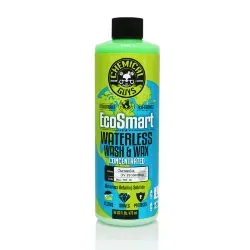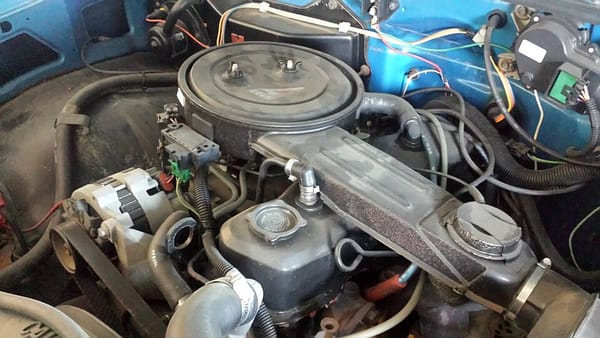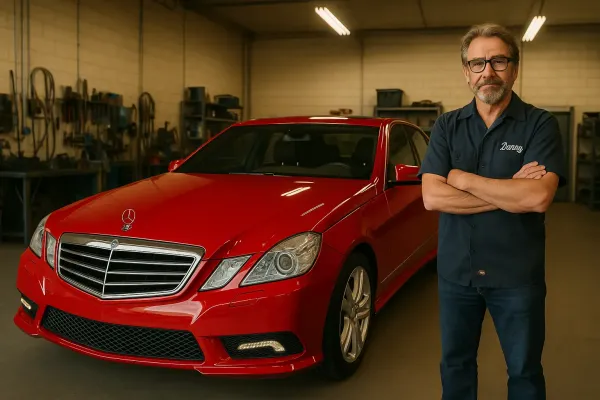How to Spot a Chevy Engine That’ll Ruin Your Life (Before You Buy It)
Author Bio: Danny is a co-owner of Driveway Dreams, an ASE Certified Master Technician with over 26 years of experience, and previous freelance writer for Car Engineer. For more than 17 years, he's owned and operated his own independent repair shop in Livonia, Michigan. Subscribe and follow, Danny!

Let’s not sugarcoat this.
Chevrolet has built some absolute monsters — small blocks that could tear asphalt and big blocks that made grown men weep.
But we’re not here to talk about those.
We’re here to talk about the ones that left people stranded on the side of I-96, boiling coolant, check engine light blinking like Morse code, and a repair bill that reads like a used Camry.
This isn’t just a warning.
This is a survival guide.
Every engine here is a cautionary tale — each one jammed into multiple GM models, each one a masterclass in how to turn engineering ambition into driveway decoration. Every paragraph is here to save you from dropping five grand into a used Chevy lemon that deserves a spot on a flatbed, not in your driveway.
Because every generation of Chevy engines tells a story.
And sometimes that story ends in fire.
Let’s go decade by decade — where each disaster builds off the last, one oil-starved bearing at a time.
1970s: When Emissions Hit, and Chevy Forgot How to Build an Engine
This was the decade Chevy went from horsepower hero to emissions zero. GM slapped together compromises in the name of fuel economy and clean air, but what they ended up with were mechanical disasters that alienated gearheads and casual drivers alike. Engines were either wheezing V8s with no guts or over-engineered aluminum paperweights that couldn’t hold a head gasket. It was the start of a long, slippery slope for Chevy's reputation — and boy, did it get slippery fast.
The world was watching muscle cars die. But instead of innovation, Chevy gave us gutless compromises that rattled themselves to death.
The 262 V8 – Camshaft Cannibal
Chevrolet Monza. Nova. Pontiac Ventura.
All victims of the 262 cubic inch (4.3L) V8. This thing was supposed to be a small, efficient V8 for the gas crisis crowd.
Instead? It ate its own camshaft.
"The 262 fell short in performance with a modest output of 110 horsepower... it lagged behind its predecessors... prone to premature cam shaft wear due to inadequate oiling..." (YouTube)
Bad oil flow. Narrow passages. Weak oil pump. And that awful mid-'70s metallurgy didn’t help a bit.
Shop Story
Had a ‘75 Monza come in barely making 20 mph uphill. Popped the valve cover — looked like someone sandblasted the lobes. New cam, lifters, and oil pump. Parts were $340. Labor was 8 hours. Customer traded it in for a Dodge Dart the same week. Said he’d rather push a Mopar than drive that Monza again.
The Monza could’ve been a fun, lightweight rear-driver. But with this anchor under the hood, it was more punishment than pony car.
The 307 V8 – Powerless on Purpose
Chevelle. Nova. Impala. Caprice. Any GM RWD car between ’68 and ’73.
This was Chevy’s great neutering experiment. Bore of a 283, stroke of a 327, and heads off a lawn tractor.
"The 307 fell flat in the performance department. It also failed to deliver any noticeable fuel economy improvements..." (YouTube)
It sounded like a V8. It even looked like a V8. But hit the gas pedal, and it moved like a sloth in a snowstorm.
The 307 was the dinner salad of Chevy V8s — you didn’t ask for it, it didn’t fill you up, and you regretted ordering it.
The Vega’s 2.3L – Aluminum Annihilation
This wasn’t an engine. It was a science experiment gone wrong.
"The Chevrolet Vega's cooling system was nothing short of a disaster... 12x12 radiator... couldn’t handle the engine’s heat output." (YouTube)
Warped heads. Cracked blocks. Blue smoke at 60k. And heaven help you if you drove it hard in summer.
Shop Story
1974 Vega. Smoking like a chimney. Coolant reservoir bone dry. Pulled the head — warpage so bad the valves looked like they were winking. Told the owner it was totaled. He laughed, said, "Good, I hated this thing." I charged him $40 just to haul it off the lot.
The Vega should’ve been GM’s import fighter. Instead, it made people wish they’d bought a Datsun.
1980s: When GM Decided to Innovate… and Failed Spectacularly
Ah, the 1980s — when digital dashboards and awkward tech promised us flying cars but delivered fried ECUs instead. GM’s bright ideas went straight from drawing board to disaster, and nowhere was it more obvious than under the hood. This was the era of techy gimmicks, diesel disasters, and four-cylinder flops that left GM customers confused and angry. It turned thousands of buyers into former Chevy fans overnight — and gave import brands a huge opening.
It was a time when every new engine was a gamble — and most of them came up snake eyes.
The Cadillac V8-6-4 – Cylinder Confusion
Fleetwood. Eldorado. Seville. All 1981 Cadillacs.
"The rocker control system wasn’t quick enough... delays in power production... engine impossible to drive smoothly." (DrivingLine)
It was the engineering version of throwing a dart at the wall and hoping it ran. Half the time, it didn’t.
Fancy tech. Dumb execution. Rockers failed. ECU lagged. Engine hunted like a drunk trying to find his keys.
Shop Story
Had an Eldorado in with a random stall at 40 mph. Customer thought it was haunted. It was the solenoids failing mid-cylinder deactivation. $600 ECM swap didn’t help. We finally disabled the system and locked it in V8 mode. Car ran fine after that — like it should’ve from the start.
Olds 5.7L Diesel V8 – The Lawsuit Motor
Delta 88. Eldorado. Seville. Pretty much every full-size GM sedan from ‘78–‘85.
"Catastrophic head bolt failures... chronic overheating... the car that single-handedly ruined the reputation & sales of diesel cars in North America..." (Reddit)
It was a gas engine block that couldn’t handle diesel compression. Blown head gaskets on the regular. Weak head bolts. Bad fuel injection. Seized engines.
I once saw a guy swap a gas 350 into his diesel Olds. Best thing he ever did.
The fallout from this engine tanked diesel’s future in American cars for decades.
The Iron Duke – Reliable Like a Rock… in Your Shoe
Chevy Citation. S10. Pontiac Fiero.
"The Iron Duke is known to be very prone to overheating." (YouTube)
Timing gear teeth? Plastic. Engine fires in the Fiero? You bet.
GM got cheap. And people paid the price.
Shop Story
1985 Fiero. Burned valve, cracked head, and surprise — low oil. Customer ran it 5,000 miles without checking dipstick. Engine torched. We did a junkyard swap for $850. Took two weekends and a six-pack of beer. Car still overheated on the test drive.
The 305 V8 – The Big-Block Impersonator
Camaro. Monte Carlo. Caprice. Every GM truck.
"The Chevy 305 engine was very reliable when properly maintained, although premature camshaft failures due to poor quality control..." (MotorState)
It was a V8 that sounded tough and went nowhere.
"Basically the problem with such a small bore is that you can't put a very large valve in the heads." (YouTube)
I’ve replaced more flat cams in 305s than oil filters on Toyotas. That should tell you something.
You could hear it rumble. Just don’t expect it to move.
1990s–2000s: Plastic Parts, Timing Chains, and Dealer Excuses
By the '90s, Chevy didn’t just cut corners — they shaved them down to plastic nubs. Engines came loaded with internal ticking time bombs, plastic intakes, and timing chains that stretched like cheap shoelaces. Mechanics were suddenly translators, explaining to customers why their engine died before 100k miles while the dealer shrugged and said "that's normal." This era built the foundation for GM's trust issues — and started pushing loyal buyers straight into Toyota showrooms.
The 3.6L V6 – Timing Chain Trauma
Traverse. Acadia. CTS. Malibu. SRX. G8. Enclave.
"Timing chain failure, excessive oil burning, water pump failure..." (TorqueNews)
The chain stretch wasn’t gradual — it was sudden. One day it started fine. The next? Rattling, misfiring, and a camshaft correlation code from hell.
Shop Story
‘09 Traverse came in on a tow hook. Chain had skipped time, took the valves with it. $1,500 junkyard motor swap and a very tense phone call with a bank. Guy still sends me a Christmas card. Probably because I saved him from paying $6,200 at the dealer.
The 2.4L Ecotec – Death by Oil Loss
Equinox. Malibu. Terrain.
"Timing failures usually stem from a bolt that loosens up over time... chain will eventually jump teeth..." (YouTube)
Also known for piston rings that couldn’t seal a paper envelope. Some of these engines were burning a quart of oil every 1,000 miles — and GM called it “acceptable.”
Shop Story
2013 Equinox. Lady brought it in because the oil light was flickering. It was 3.5 quarts low. Timing chain slapped, balance shaft gear gone, and the engine sounded like a blender full of marbles. Totaled. She cried. I offered to help find a CR-V.
The 2.2L Ecotec – Snap, Crackle, Broken Valves
Cavalier. Cobalt. Malibu. Alero.
"Timing chain broke while I was driving... it bent the valves of the motor. I needed to replace the motor..." (CarForums)
You know how timing chains were supposed to last the life of the engine? Not this one. Plastic guides shattered, tensioners collapsed, and before you knew it — BANG. Engine suicide.
Shop Story
College kid in a rusty Cobalt. Said it “felt slow.” Timing had already jumped three teeth. Compression test showed 40 PSI in two cylinders. Rebuild? Not worth it. I told him to take the bus.
2010s–2020s: Modern Tech, Modern Failures
This was supposed to be Chevy’s redemption arc — direct injection, active fuel management, lightweight materials. Instead, they delivered misfiring lifters, exploding valves, and coolant leaks hidden behind walls of plastic. New trucks and crossovers were grenading before their first tire rotation, and GM’s answer was to either ignore it or blame the driver. Chevy didn’t just lose sales — they lost the benefit of the doubt. And that’s the hardest thing to buy back.
The 1.8L I4 – The Plastic Time Bomb
Cruze. Sonic. Trax.
"Plastic water outlet housing... cracks all the time... people keep driving it and blowing the head gasket." (YouTube)
Coolant leaks, cracked plastic housings, and oil pans that drip like a cheap coffee maker. If your Cruze runs cool and smooth, congrats — it’s Tuesday. Tomorrow it may explode.
Shop Story
2015 Sonic, overheating in traffic. Popped the hood and the coolant outlet was steaming like a tea kettle. Owner said, “Shouldn’t this be metal?” I nodded. We swapped in an aftermarket aluminum one. $290 lesson in GM cost-cutting.
The 6.2L V8 L87 – The Big One Under Federal Investigation
Silverado. Tahoe. Escalade. Yukon. Suburban.
"Connecting rod bearing wear... engine to seize or a breaching of the engine block..." (NHTSA)
It’s 2023 and GM is still dropping bombs under the hood. These trucks are failing at under 10,000 miles — and dealers are playing dumb.
Shop Story
Guy brought in a brand-new Yukon. Engine locked up in his driveway. We cracked it open — rod bearing was wiped. No oil pressure. $10K long block and GM corporate dragging their feet. He said next time he’s buying a Lexus.
5.3L & 6.2L AFM/DFM – Displacement Disaster
Silverado. Sierra. Tahoe. Suburban.
"AFM lifter failures... excessive oil consumption... electronic control failures..." (NormanTaylor)
The idea was smart: shut off cylinders for better MPG. The execution? A nightmare of lifter collapse, cam wear, and baffling misfires.
Shop Story
2018 Silverado with a hard tick and misfire. Lifter collapsed, pushrod bent, and the cam lobe had a divot like a ski slope. Full top-end job. $3,200 later, the truck ran fine — until another lifter failed at 80k.
The 2.8L V6 – The Timing Chain Copycat
Colorado. Canyon. CTS. Buick Park Avenue (China). Cadillac SLS.
"Biggest problem... timing chain... risk of timing chain failure..." (NewParts)
This engine was the 3.6’s younger sibling. Same bad parts. Same bad results. Chevy just couldn’t quit stretching chains.
Shop Story
2010 CTS. Engine rattling like dice in a cup. Customer thought it was the exhaust heat shield. It was the timing chain ready to lunch the valves. We caught it just in time. Saved the engine. Barely.
Final Verdict: If It’s Got One of These Engines, Walk Away
Chevy built icons.
But these engines weren’t icons. They were warnings.
Each one took a chunk out of GM’s credibility. Each one turned die-hard owners into lifelong skeptics.
These powerplants didn’t just kill resale value — they gutted trust. And they did it across generations.
If you’re shopping used?
Check the engine code first.
If it’s got a 3.6L, 2.4L, 2.2L, or any engine with AFM/DFM? Run.
Don’t trust the badge. Trust your mechanic. Trust your gut.
Your wallet will thank you. Your mechanic will miss you.
Scroll down. Share this. Send it to a friend shopping for a Silverado or Traverse.
Because not every Chevy is built like a rock.
Some are built like a grenade.
And you don’t want to be holding the pin.



